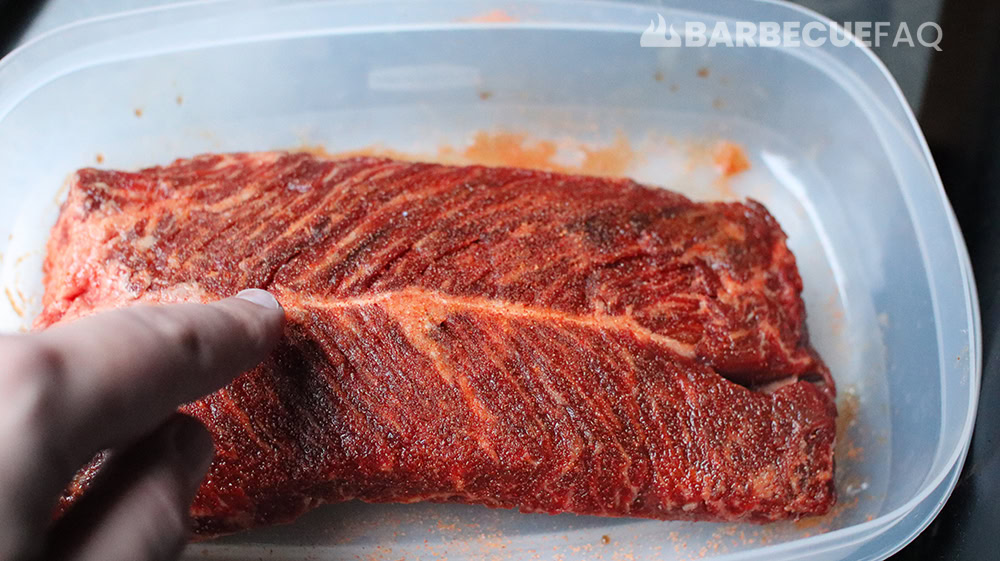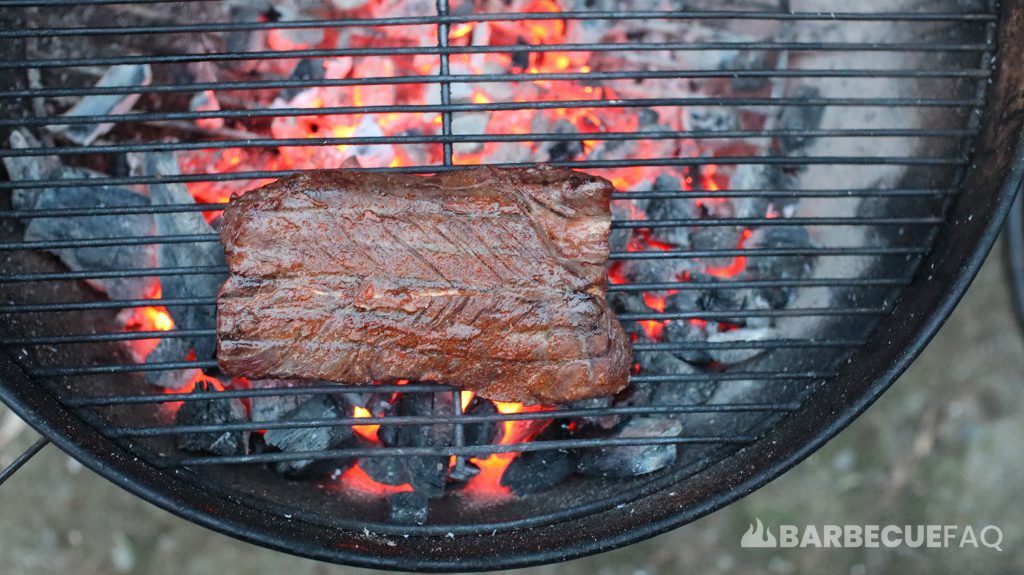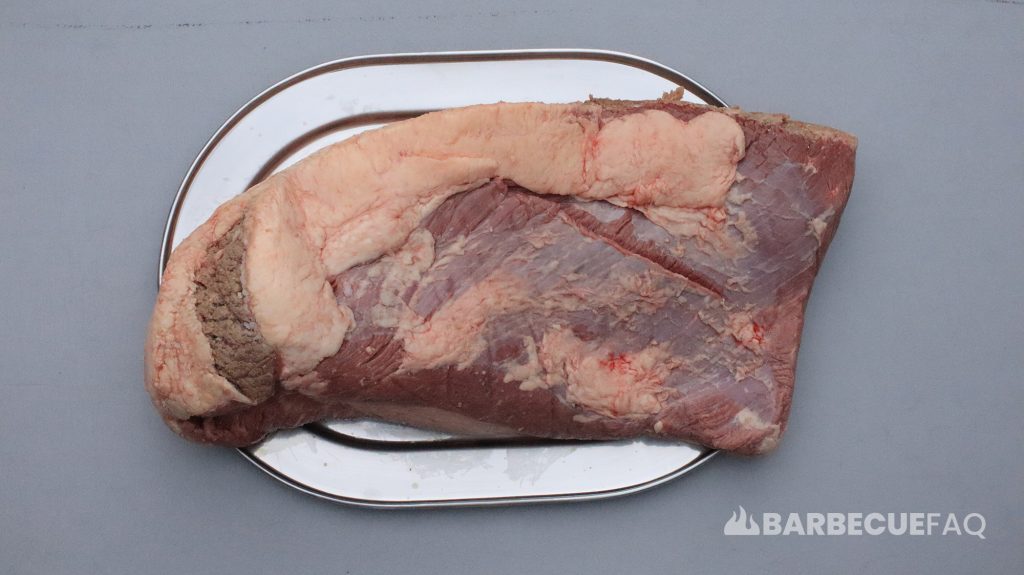From an anatomical perspective, the hanger steak are the crura (singular is crus or leg in Latin) – meaning they are the legs of the diaphragm.
It’s called the “hanger’ steak because it quite literally hangs from the diaphragm.

Other names for Hanger steak:
- France – Onglet
- United States – Hanging tender
- United Kingdom – Thick skirt
- Italy – Lombatello
- Butcher’s Steak
What Does Hanger Steak Taste Like?
Since the hanger steak is located in the abdominal cavity of the steer, it is often considered offal (internal organs of an animal).
This type of steak will have a subtle hint of liver – however, it’s not overwhelming; Some people might describe it as “iron-ish.”
It’s definitely a beefier flavor than you’d find in a steak like a ribeye.
Butchers like to say that the Hanger steak represents how the animal was raised, what is ate, and where it’s from.
Similar to how a sommelier might describe where grapes were grown.
Hanger Steak has a Central Tendon That Needs to be Removed
Most of the time when you buy Hanger steak it will already have the surface membrane removed.
BUT a lot of time the central tendon is in tact.

You could opt to:
- Remove the tendon first, then cook
- or remove it after you cook it
Either way, it needs to be removed as it won’t render and is super chewy.
How is Hanger Steak Cooked?
Hanger steak is a rather versatile cut of meat.
It can be grilled, braised, fried, as a pot roast, etc.

Hanger steak is similar to skirt steak and will take tell to marinades as it has as somewhat loose grain.
When I have hanger steak I typically just use kosher salt and pepper, maybe a little seasoned salt.
Like flank steak and skirt steak, it’s typically recommended to cook the steak to rare or medium-rare and to slice across the grain.

Where to Buy Hanger Steak
You’d pretty much never find this in your grocery store as there’s only 1 per cow.
If you have a local butcher – ask them, they should know what you’re talking about.
But if all else fails, some online retailers do sell it (no affiliate links):
The only place I’ve ever got it from is Porter Road.




